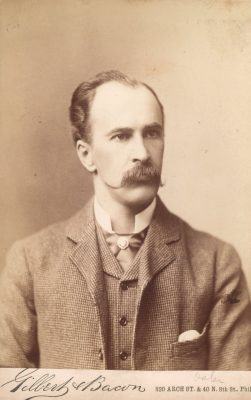After its failed experiment in 1847, the Medical School abandoned its ambition to reform medical education. Instead of trailblazing, Penn chose to rely “on close to a hundred years of leadership and on the reputation of its nationally famous professors.” Throughout the 1850s and 1860s other American medical schools reformed, while Penn remained inactive. The University of Michigan rejected the proprietary model and gave their faculty fixed salaries; Northwestern created a graded curriculum which included lectures on microscopy and chemistry. In 1871, Harvard’s president Charles W. Eliot persuaded the medical faculty to accept a series of reforms. Harvard endowed their faculty, lengthened its courses to 9 months, and created a fully graded curriculum. Much to the dismay of Penn’s faculty, Harvard became the leading institution of medical education in America. William Osler, a Penn professor from 1884 to 1889, described Penn’s identity in his memoir,
“There was probably no school in the Union in which the outlook for reform was thought to be less hopeful than at the University. The faculty was a strong one, but it contained a number of men who were saturated with old-time prejudices, and who were bitterly opposed to any change in the method of medical education”
The Medical School needed to reform to change their reputation and increase enrollment. After the war ended, southern students did not return to Penn; in 1865, the Medical School’s enrollment included 332 men from Pennsylvania and 66 students from the entire South. Although enrollment was high, Penn lost its national identity, which had attracted students from across the country in the 1840s and 1850s. Once the trustees and faculty acknowledged the Medical School’s weakened state, reform began to take place.

